The popular “Aerides”(Tower of the Winds), as it is commonly called, is a building from the end of the 1st century e.g. Its official name is the Clock of Kyrristos and it is believed to have been built by Andronikos the Kyrristis (or Kyrristos), a Greek astronomer from Kyrros of Macedonia (or Macedonian Syria).
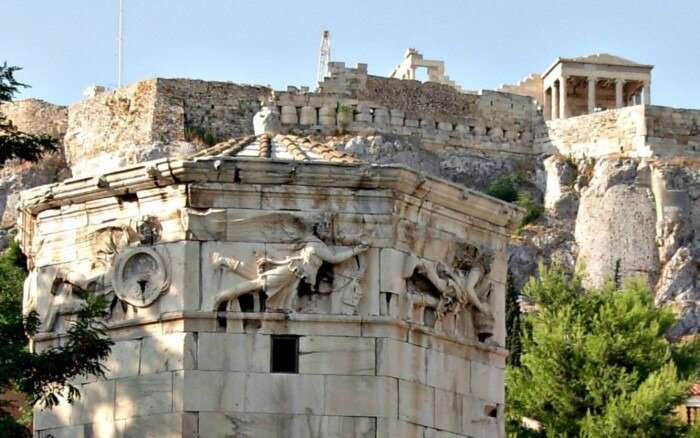
The impressive marble building is located at the northern part of the Acropolis, in the area of Roman Agora, is of Pentelic marble and each side is 3.20 meters long and a total height of 12 meters, has no columns, while in the same number of metopes are engraved eight main Anemoi(winds), from which it takes its popular name. It has two doors, one to the north and one to the west, and its roof is conically tiled.
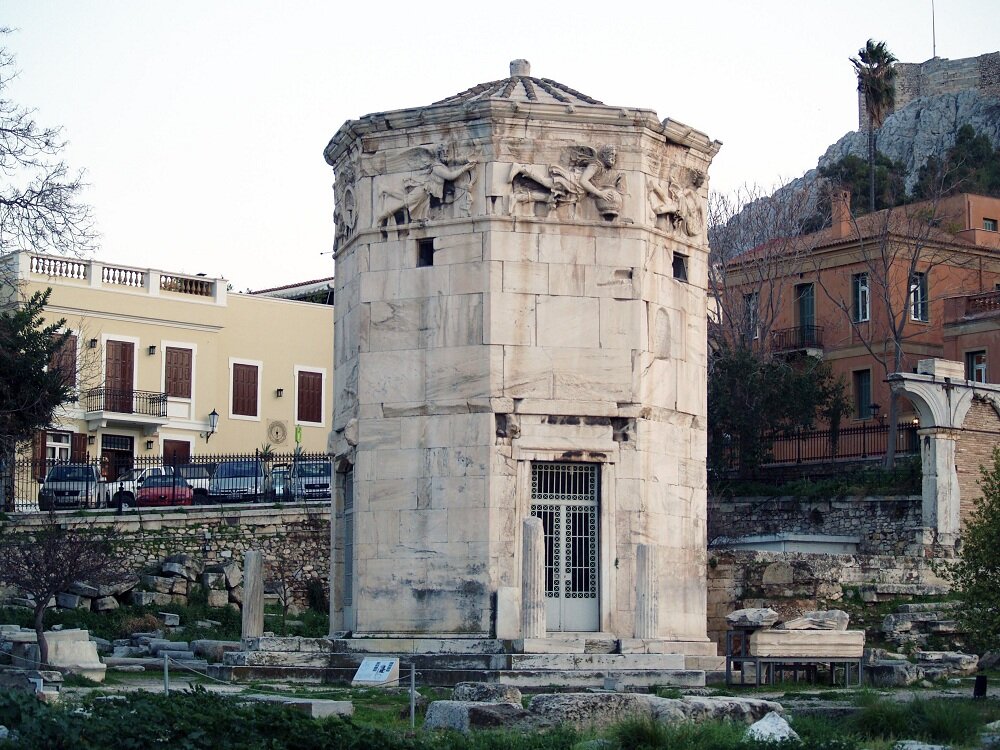
The monument impressed travelers and historians both for its construction and for its scientific utility. They called it the Tower of the Winds or the Temple of Aeolus, they described it in great detail and divided it into two rhythms. Its exterior belongs to the Corinthian style because of the columns, while its interior belongs to the Doric style. Apart from being a meteorological station, it was also a time station and for calculating the time on sunless days, there was a special hydraulic clock installation inside the building. It is believed that the builder of the monument combined the inventions of earlier clockmakers such as Archimedes, Ctesiphon and Philo.
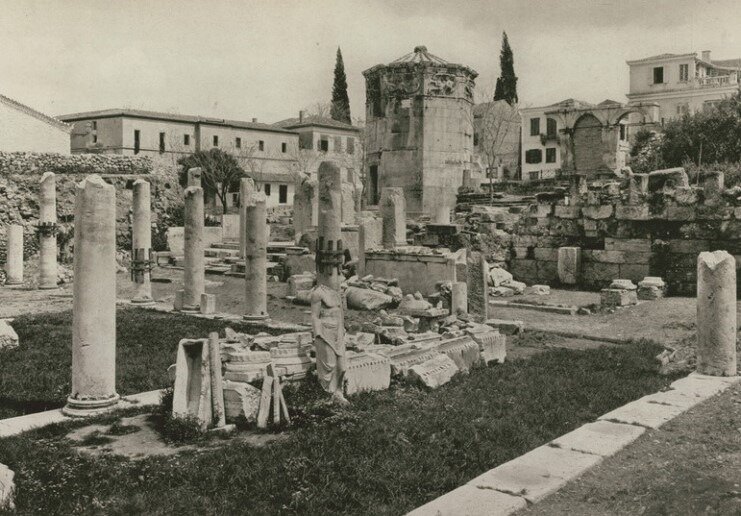
The beautiful winged Anemoi(winds) are the most striking feature of the Aerides. They fly in relief, with their name engraved on each of the eight sides of the tower, each bearing a special symbol. They are Voras(north), Kaikias (northeast), Apiliotis (east), Evros (southeast), Notos(south), Lips (Livas, southwest), Zephyros (west), and Skiron (northwest) ). A brass Triton adorned the top of the roof as a weather vane indicating the wind direction.
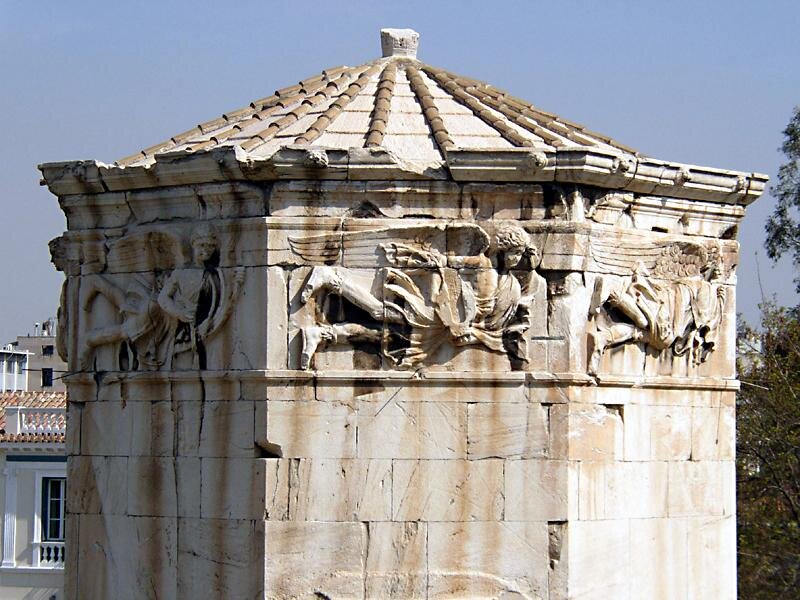
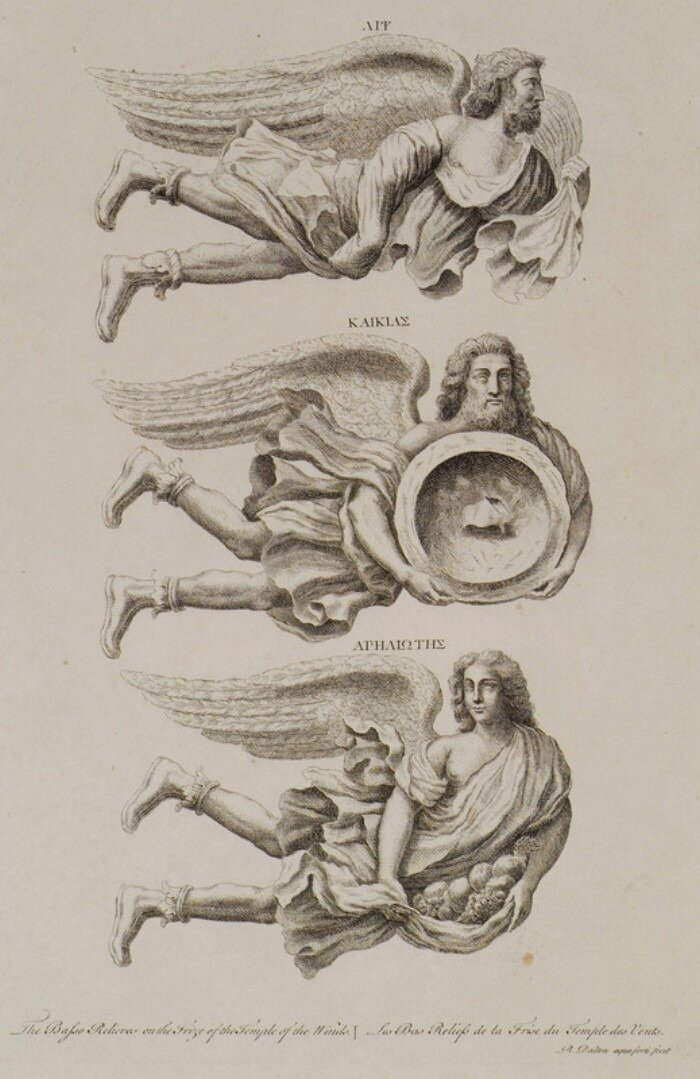
Its historical path was linked to the Christian religion, as it was used as the bell tower of a Byzantine church in the early Christian years, while it is described as the temple of Aeolus in a description by the traveler Kyriakos Agonitis. Later it was converted into a tekke (Muslim monastery) and dervishes from different parts of the Ottoman Empire settled there. It was the dervishes who, according to some historians, saved the monument from Elgin’s stealing injunctions.
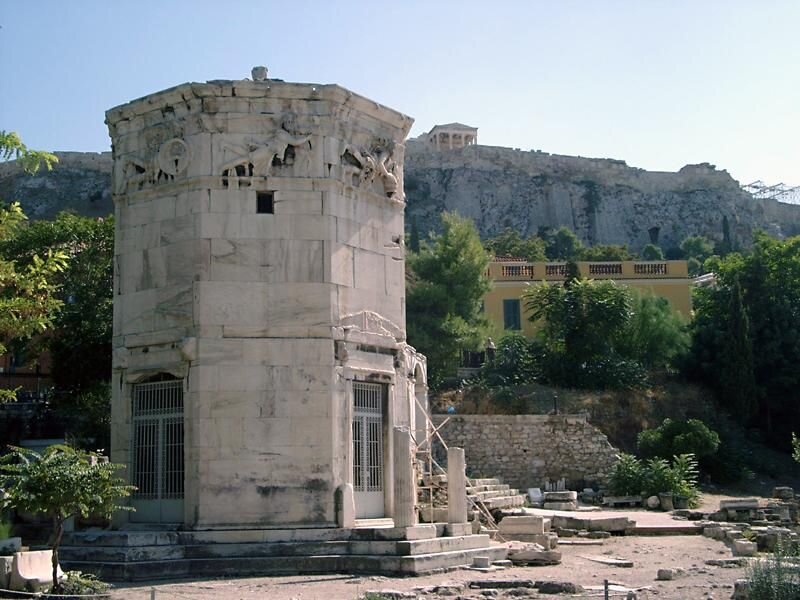
When Athens was liberated from Turkish occupation by the Greeks in 1821, it was included in the Antiquities and Archeological Sites of Athens. It was fully excavated in the 19th century by the Hellenic Archeological Society. It gave its name to the neighborhood that developed around it and is still one of the most picturesque places in old Athens.





